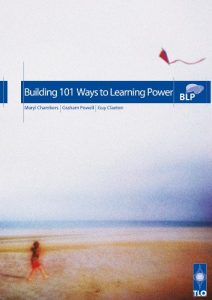This handbook is written for classroom teachers who have been introduced to the idea of learning power, and who are interested in using it in practice. Ideally, they will have read Guy Claxton s Building Learning Power, key concepts of which are summarised very briefly on pages 4 to 7 of this handbook. You will not find a list of detailed tricks and tips; this is not an instruction manual. The process of building learning power is far too dynamic for that. We are inviting you to make a step change in what you are trying to effect in the classroom. There are lists, and classroom examples, and suggestions, but most of these aim to encourage you to expand your own thinking about how you can help young people to become better learners. Although there are no shortcuts, there are things you can do immediately that will develop learning dispositions and make teaching more rewarding. Successfully fostering the habits needed for lifelong learning takes a little longer! A tricky choice. Learning power works for all ages, and this handbook applies equally to primary and secondary classrooms. However, where primary school teachers tend to refer to their young learners as pupils, secondary school teachers prefer the term students: whichever word an author picks, she risk offending half of her potential readers. In this handbook we have plumped for students : the learning power model treats young people as our active co-participants in the processes of learning, and whatever the reality in the classroom the connotations of student perhaps carry more of this active sense than those of the word pupil . This last point contains the vital aspect of learning power that takes it forward from earlier approaches to learning to learn. Learning power engages your students consciously with the ideas and processes of their own learning, in the knowledge that learning itself is learnable.
This site is safe
You are at a security, SSL-enabled, site. All our eBooks sources are constantly verified.






